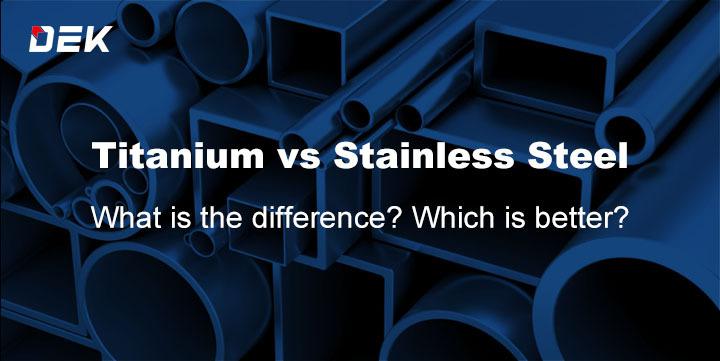Titanium and stainless steel are both traditional metals often used in the manufacturing industry today. These two metals are inherently exquisite and both possess their unique set of properties and strength. Consequently, a knowledge of both titanium and stainless steel can go a long way in helping you achieve your goal on your project. We have curated this comprehensive guide to help you differentiate between both metals.
Let’s Compare 17 Differences Between Titanium and Stainless Steel
Titanium and stainless-steel exhibit excellent characteristics that differentiate the two from one another. For easy understanding, we will draw a comparison between titanium and stainless steel using different properties. These properties include elemental composition, corrosion resistance, electrical conductivity, thermal conductivity, melting point, hardness, weight, and many more.
Titanium vs Stainless Steel: Element Composition
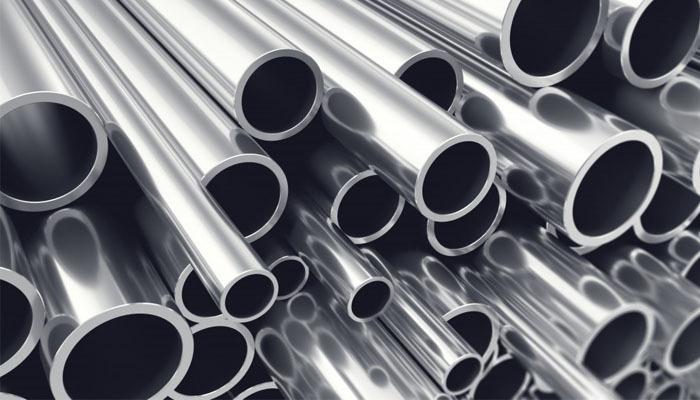
Element composition is a characteristic that can be used to differentiate between titanium and stainless steel. In comparison, commercially pure titanium contains a variety of elements including nitrogen, hydrogen, oxygen, carbon, iron, and nickel. Having titanium as the major element composition, other elements vary in composition between 0.013 and 0.5 in percentage.
Stainless steel on the other hand is composed of varieties of element composition with 11% chromium as well as other elements with percentage composition ranging from 0.03% to over 1.00%. The chromium content of stainless steel helps to prevent rust and also provides heat-resistance characteristics. These elements include aluminum, silicon, sulfur, nickel, selenium, molybdenum, nitrogen, titanium, copper, and niobium.
Titanium vs Stainless Steel: Corrosion Resistance
When it comes to corrosion-related applications, there is a term named specialty metals. These specialty metals are highly corrosion-resistant metals. In this context, specialty metals such as titanium offer high corrosion resistance and mechanical stability where other metals such as stainless steel and many others are inadequate. Stainless steel materials offer excellent mechanical properties; however, their corrosion resistance is limited. This limitation is mostly found in concentrated acids at high temperatures.
Specialty metals such as titanium are mostly attractive for use in corrosion-sensitive equipment in varieties of industries. In conclusion, titanium is more corrosion resistant than stainless steel in a wide field such as corrosion against alkalis, acid, natural waters, and industrial chemicals.
Titanium vs Stainless Steel: Electrical Conductivity
Electrical conductivity involves the flow of electrons through a material due to a drop in potential. Also, the atomic structure of such metal contributes strongly to its electrical conductivity. In comparison using copper as a standard for measuring electrical conductivity, titanium is not a good conductor. It exhibits about 3.1% conductivity of copper while stainless steel is 3.5% conductivity of copper.
From another view of electrical resistance which is the opposition a material exhibit to flow of electron. From this point of view, titanium displays poor conductivity. As a result, titanium is a fair resistor.
Titanium vs Stainless Steel: Thermal Conductivity
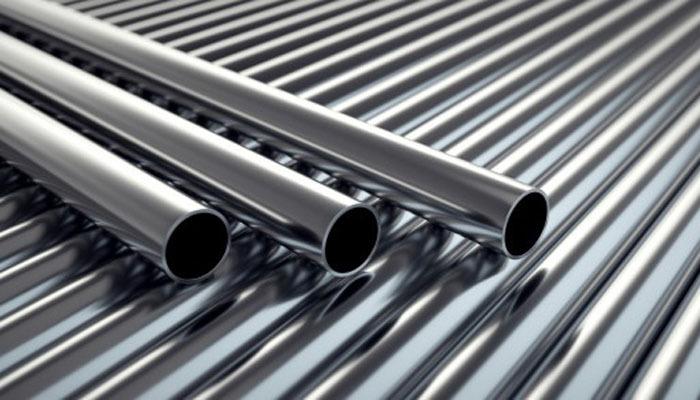
Thermal conductivity is another characteristic that can be used to draw comparisons between titanium and stainless steel. The thermal conductivity is a measure with which titanium and stainless steel can be used for thermal applications. In this process, the amount of energy as well as the rate at which the energy is absorbed and transferred is measured and determined. In comparison, titanium has a thermal conductivity rated at 118 BTU-in/hr-ft²-°F.
On the other hand, the thermal conductivity of stainless-steel ranges from 69.4 to 238 BTU-in/hr-ft²-°F. This translate that stainless steel exhibit higher thermal conductivity compared to titanium. In a situation where the thermal conductivity takes precedence over other characteristics, then stainless steel can be considered.
Titanium vs Stainless Steel: Melting point
A material’s melting temperature known as the melting point is the temperature at which such material begins to transit from a solid phase into a liquid phase. At this temperature, the solid phase of material and the liquid phase of such material exist in equilibrium. Once the material reaches this temperature level, it can be easily formed and it can be used for thermal applications.
In this case, titanium exhibit 1650 – 1670 °C (3000 – 3040 °F) while stainless steel exhibit 1230 – 1530 °C (2250 – 2790 °F). This shows that when a metal is required for melting point application, then titanium is preferred over stainless steel.
Titanium vs Stainless Steel: Hardness
The hardness of a material is a comparative value that helps to describe such material’s response to etching, deformation, scratching, or denting along the material’s surface. This measure is mostly done with the use of indenter machines that exist in vast varieties depending upon the strength of the material. For high-strength material, manufacturers or users make use of the Brinell hardness test.
While the Brinell hardness of stainless steel varies greatly with alloy composition and heat treatment, it is in most cases harder than titanium. However, titanium deforms easily when indented or scratched. In a bid to avoid this, titanium forms an oxide layer named titanium oxide layer that forms an exceptionally hard surface that resists most penetration forces. Titanium and stainless steel are both resistant materials that work great when exposed to baring and rough environments.
Titanium vs Stainless Steel: Weight
One of the important striking difference between titanium and stainless steel is their densities. Titanium has an excellent strength to weight ratio which makes it provide almost the same amount of strength as stainless steel at 40% of its weight. When measured, titanium is half dense as steel, and it’s substantially lighter than stainless steel.
As a result, titanium is vital for projects that require minimized weight with maximized strength. This is why titanium has excellent applications in aircraft parts and other weight-dependent applications. On the other hand, steel is applicable in vehicle chassis and many more but most time weight reduction is often a concern.
Titanium vs Stainless Steel: Durability
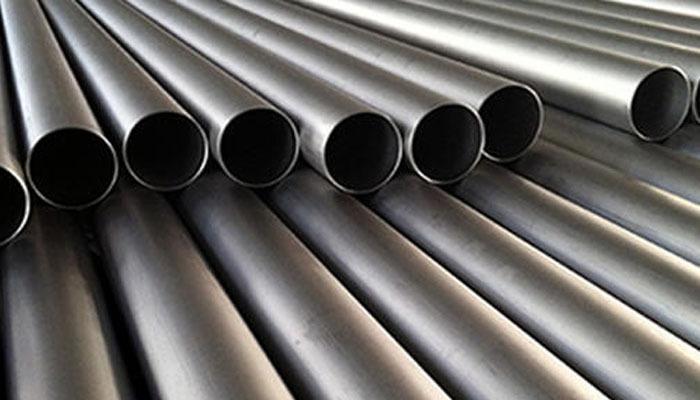
A material’s durability is its ability to remain functional without the use of excessive repair or maintenance whenever the material faces normal operation challenges over its half-life. Both titanium and stainless steel are durable – thanks to the excellent properties they offer. In comparison, titanium is approximately 3 to 4 times stronger than stainless steel. This makes titanium to have a prolonged lifespan for generations. However, titanium can be easily scratched as it requires a polishing routine or risks its surface to become marred or dull.
Titanium vs Stainless Steel: Machinability
Machinability is a comparative score given to metals to determine their reactions to machining stress including milling, turning, stamping, and many more. This score is vital in drawing comparisons to determine the best machinable material for the success of one’s project. Also, machinability scores can be used to determine the type of machining to be used. Titanium’s elastic modulus is somehow low which suggests that titanium flexes and deforms easily. This is attributed to titanium’s difficulty in machining because it gums up mills and prefers to return to its original shape.
On the other hand, stainless steel has a much higher elastic modulus that allows it to be readily machined. As a result, it is used in applications including knife edges because it breaks and does not bend when under stress.
Titanium vs Stainless Steel: Formability
When a material exhibits plastic deformation without being damaged when formed it is referred to as the material’s formability. When titanium is compared to stainless steel, titanium and its alloy can be formed using the techniques and equipment suitable for stainless steel. However, titanium possesses lower stretch formability with a requirement of more generous bend radii.
Besides, titanium has a greater tendency of galling compared to stainless steel and can be rectified using hot forming. Also, there may be spring back while titanium great majority are made by cold forming or hot forming followed by hot sizing to overcome the problem.
Titanium vs Stainless Steel: Weldability
Weldability – also known as joinability is a material’s ability to be welded. Titanium and stainless steel can be welded but one of the two metals is easier to weld than the other. A material’s weldability is usually used to determine the process of welding and to compare the quality of the final weld to that of other material. In comparison, stainless steel is easier to weld compare to titanium. This is because titanium welding is a specialty within a specialty. Although at a glance, titanium welding looks similar to steel welding, it requires high professionalism.
Titanium vs Stainless Steel: Yield Strength
In a comparison of the yield strength of titanium and stainless steel, it is an interesting fact that stainless steel is if far stronger than titanium. This interesting discovery goes against the popular misconception that titanium’s yield strength is stronger than most metals. While titanium is only on par with stainless steel, it exhibits this at half the density of stainless steel. This is why titanium is regarded as one of the strongest metals per unit mass.
On the other hand, stainless steel is a go-to material whenever a project requires overall strength. In conclusion, when a project requires only strength, stainless steel is a perfect choice whereas titanium is preferred when strength per unit mass is required.
Titanium vs Stainless Steel: Tensile strength
The ultimate tensile strength of a material is the maximum on the engineering stress-strain curve. It is the maximum stress that can be sustained by material in tension. The ultimate tensile strength in most time is shortened to tensile “strength” or “the ultimate”.
When a metal reaches its ultimate tensile strength, the material undergoes necking where the cross-sectional area reduces locally. When compared titanium exhibit a tensile strength of 230 MPa (31900 psi) while stainless steel undergoes a tensile strength rated from 34.5 to 3100 MPa (5000 – 450000 psi). This value depicted that stainless steel has a higher ultimate tensile strength and as such, it is preferred over titanium.
Titanium vs Stainless Steel: Shear Strength
A material’s shear strength is its resistant properties against a shear load before the component fails in shear. The shear action occurs normally in a parallel direction to the direction of the force acting on a plane. Titanium shear stress is rated between 240 to 335 MPa depending on alloy properties while the stress of stainless steel is rated between 74.5 – 597 MPa. This shows that stainless steel is a perfect choice in situations where high resistance against shear load is required.
Titanium vs Stainless Steel: Color
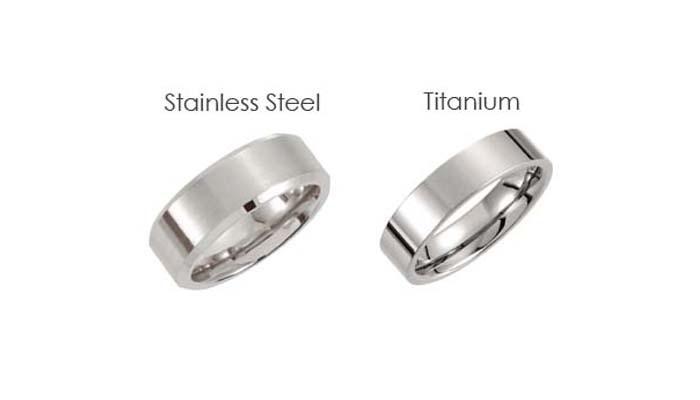
When it comes to color, titanium and stainless steel may look similar. Titanium and stainless steel in the natural state are silvery metals. The difference is that titanium is somewhat darker. In another dimension, both titanium and stainless steel may look grey, however, titanium will be darker than stainless.
Titanium vs Stainless Steel: Price
In terms of cost, titanium is relatively more expensive than stainless steel. As a result, titanium becomes more cost-prohibitive for some specific industry including construction industries where large quantities are required. In a situation where the money is an important factor in part consideration, stainless steel may be chosen over titanium if both are deemed suitable.
Titanium vs Stainless Steel: Applications
Titanium Applications
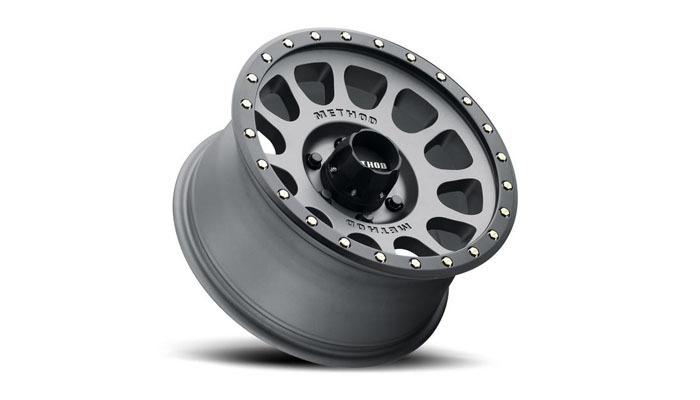
Titanium exists in vast varieties of applications including an alloying element in steel to reduce grain size as well as a deoxidizer. It also has applications in stainless steel to reduce carbon content. In the industrial space, titanium is mostly used in the following industry:
Aerospace
Titanium is highly applicable in aerospace and marine including its usage in aircraft, naval ships, missiles, armorer plating, spacecraft, and many more. This is attributed to its its fatigue resistance, high crack resistance, high tensile strength to density ratio, ability to withstand moderately high temperatures without creeping, and withstand high corrosion resistance.
Industrial
Titanium is applicable in a variety of industrial applications including heat exchangers, valves, process vessels in the chemical and petrochemical industries. Its usage is due to its high corrosion resistance. Some specific alloys of titanium are used in oil and gas nickel hydrometallurgy and downhole application due to their corrosion resistance and high strength.
Architectural and consumer
Titanium metals are applicable in vast varieties of consumer applications including the automotive industry. Especially automobile and motorcycle racing where high strength, rigidity, and low weight are required. Titanium is also used in many sporting goods including tennis rackets, lacrosse stick shafts, cricket, hockey, golf clubs, football helmet grills, bicycle frames, and components. They are also used in spectacle frames that are highly expensive but durable, lightweight, long-lasting with no skin allergies.
Jewelry
Titanium is a popular product used in the jewelry industry as a result of its durability, especially in titanium rings. Chemically, titanium is inert which makes it more suitable for people with allergies or those who wear jewelry in specific environments such as swimming pools. In this industry, titanium is alloyed with gold to produce what is marketed as 24-karat gold. Even in the watch industry, titanium is used these days as a result of its impressive properties such as lightweight, durability, corrosion, and dent resistance.
Medical Industry
Titanium is non-toxic with many applications in the medical space. They are used in the production of surgical implements & implants including dental implants, hip balls, and sockets.
Other uses include the production of nanoparticles used in electronics and the delivery of cosmetics and pharmaceuticals. It’s also applicable in producing surgical instruments used in image-guided surgery including crutches, wheelchairs, as well as other instruments that require low weight and high strength.
Storage of Nuclear Waste
Due to the high corrosion resistance of titanium, titanium is used for the production of containers for the long-term storage of nuclear waste. Several studies on titanium have ascertained that titanium can be used to produce containers lasting for more than 100,000 years. As a result, titanium is installed over other containers to make them long-lasting.
Stainless Steel Applications
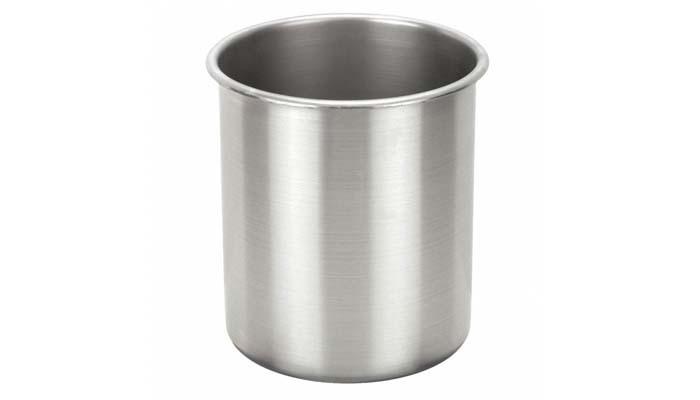
Architecture
Stainless steel is used in buildings due to its durability and aesthetics. Stainless steel is used in the construction of modern buildings – thanks to the development of high-strength stainless steel grades such as lean duplex grades. Stainless steel feature a low reflectivity, and as a result, they are used as roofing materials for airports to prevent pilots from being dazzled.
Also, it helps to keep the surface of the roof close to ambient temperature. They are also used for road and pedestrian bridges in the form of tubes, plates, or reinforcing bars.
Paper, pulp, and biomass conversion
Stainless steel has a great application in the pulp and paper industry to avoid iron contamination of products. This is because of its corrosion resistance to a variety of chemicals used in the process of papermaking. An example is found in the use of duplex stainless steel in digesters to convert wood chips into wood pulp.
Processing of Chemicals and Petrochemical
In the Processing of Chemicals and Petrochemical, stainless steel is extensively used in different applications. Stainless steel is used because of its corrosion resistance to gaseous, aqueous, and high-temperature environments.
Food & Beverage
Stainless steel is a material of choice for the food and beverage industry especially austenitic (300 series: types 304 and 316). They are widely used because they do not affect the taste of food products and are easily sterilized and cleaned to prevent bacterial infestation of food products. They are also used widely to produce cookware, commercial kitchens, brewing beer, meat processing, and many more.
Energy
Stainless steel is commonly used in all forms of power stations ranging from sola to nuclear. They are used ideally as mechanical support for a power generation unit in a situation where the permeation of liquid or gas is required. For example, filters in cooling ware, or structural support in electrolytic power generation, or hot gas clean up and many more.
Firearms
Stainless steel ae used in some firearms as an alternative to blued or packetized steel. For example, some handgun models including the Colt M1911 pistol and Smith and Wesson Model 60 are made entirely out of stainless steel. The use of stainless steel gives a high-luster finish that resembles nickel plating. Unlike the nickel plating, the finish is not vulnerable to peeling flaking, wear off from rubbing, or rust when scratched.
Automobiles
Stainless steel is used in the production of automobiles such as cars, busses, trucks, and many more. They are used for tubing, catalytic converter, tailpipe, collector, muffler, and many more. Stainless steels are found in miscellaneous applications including balls for seat belt operations devices, springs, windshield wiper blades, fasteners, and many more. Stainless steel also has a wide application in aircraft and spacecraft for fuel tanks and many more. This is possible because of its thermal stability.
Medical Industry
Mostly, medical and surgical tools are produced from stainless steel because of o sterilization ability in autoclave and durability. Besides, stainless steel is used on surgical implants including bone reinforcements and replacements. They are also used in a variety of applications such as dentistry and more.
3D printing
There has been a wide usage of stainless steel in 3D printing. Most commonly 3D printing service providers have devices proprietary stainless steel sintering blends for use in prototyping. The most used grade of stainless steel used in 3D printing includes 316L stainless steel. Stainless steel is used because of its high-temperature gradient and fast rate of solidification which results in better mechanical properties.
Summary Comparison Table
Based on our comparison in the section above, we will present a summary table to help summarize the findings. Below are our summary tables.
Titanium vs Stainless Steel: F.A.Q
Summary
What comes to the minds of designers when tough materials are required for the project is stainless steel and titanium. These two metals come in a wide assortment of alloys that offer vast varieties of impressive properties. To help you understand the two metals and to achieve a successful project, we have presented a complete guide on the properties, strength, and application of stainless steel.

